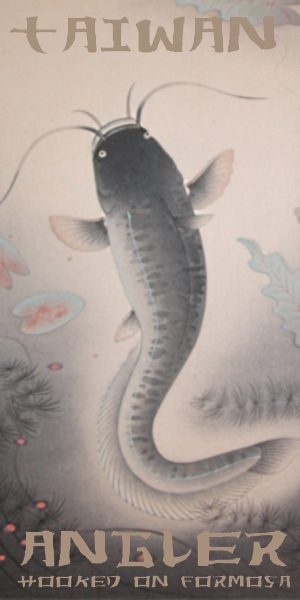Species Profile: Snakehead
 Monday, December 13, 2010 at 11:41AM
Monday, December 13, 2010 at 11:41AM Family: Channidae Blotched snakehead (Channa maculat)
Blotched snakehead (Channa maculat)
Scientific names: Channa maculat (blotched snakehead), Channa asiatica (small snakehead), Channa micropeltes (giant snakehead)
Common names: Snakehead, blotched snakehead, giant snakehead, small snakehead, toman, haruana
Habitat: Ponds, lakes, slow streams, swamps, and canals. Can live in stagnant or low-oxygenated water. Prefers cover from which to ambush prey.
Size range: Giant snakeheads can reach sizes of 2 meters. Sizes of 50-90 cm are more common.
Angling tactics: Casting shallow running or top-water lures is the most common approach. Spinnerbaits and soft plastics can be productive. Frog imitators are the most popular snakehead lures. Braid leaders are recommended.
Maligned outside of Asia as an invasive and potentially destructive species, the snakehead has become the boogeyman of exotic fishes in the U.S. and Asia. While media reports painting a picture of an indestructible monster fish border on the ridiculous, the snakehead’s reputation as a voracious and highly adaptable predator is deserved. Specimens have been known to attack and devour largemouth bass roughly their size, and their ability to breath air with primitive lungs means that they can potentially move from one body of water to another, though rumors of specimens actually “walking” may be another bit of “fishzilla” hyperbole.
That’s all academic since we are talking about Taiwan, where the snakehead is a native species increasingly sought after by anglers, particularly with the growing popularity of lure fishing on the island. Today, anglers from Japan and other Asian countries come to Taiwan to do battle with this hard hitting game fish.
Snakeheads can be found in almost any body of still or slow-moving fresh water: ponds, lakes, even drainage canals that seem far too small to support a large predatory fish. Snakeheads will sit and wait under mats of weeds and other debris, ready to pounce on anything that moves into striking range. Other fish, amphibians, small aquatic birds, even unlucky rodents can end up on the menu.
Anglers usually throw lures near cover and try to coax a strike. Top-water lures such as poppers or anything that makes enough of a commotion to attract attention appear to work best. Frog imitators are a favorite lure among diehard local snakeheaders. Just such a lure was pushed into my hands when I inquired at a local tackle shop about the species. Most of the thrill of snakehead fishing comes from the initial strike when the greedy fish attempts to incapacitate the bait swallow it whole. What follows is usually a tug-o-war with the snakehead trying to make it back to the safety its lair and to potentially wrap your line around a submerged log or some other aquatic obstacle.
The clerk at the tackle shop recommended a braid leader because the fish’s toothy maw can easily saw through most monofilament, so also watch those fingers when unhooking!









